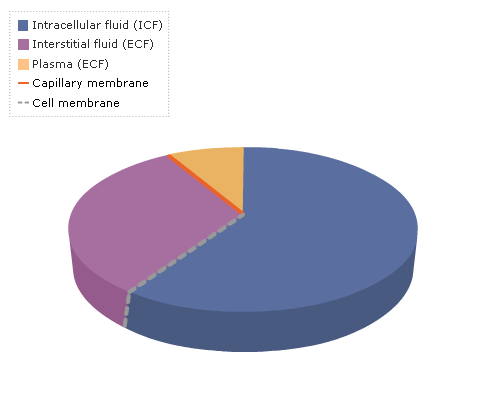Movement Between Compartments
Movement in and out of the cell
The cell membrane permits water to move through it freely in or out of the cell. The major factor influencing this movement is the osmotic gradient across the membrane; the main contributors to osmotic pressure are the electrolytes.
Large molecules (such as proteins) and charged particles (such as electrolytes) do not readily cross the cell membrane, but glucose does readily do so by facilitated diffusion.
Movement between plasma and interstitial fluid
Gaps between endothelial cells allow free movement of electrolytes and other small particles between plasma and the interstitial space.
Large particles (such as proteins) cannot pass and the resulting osmotic pressure difference has a major role in minimizing net fluid loss from the plasma.
